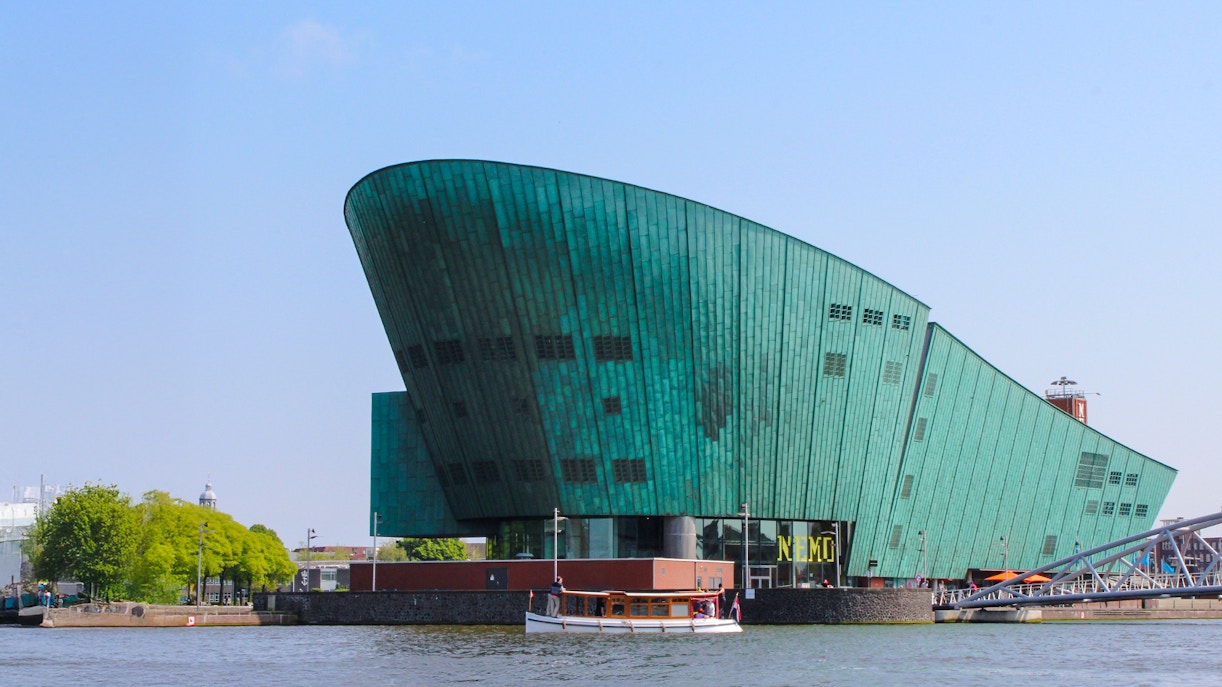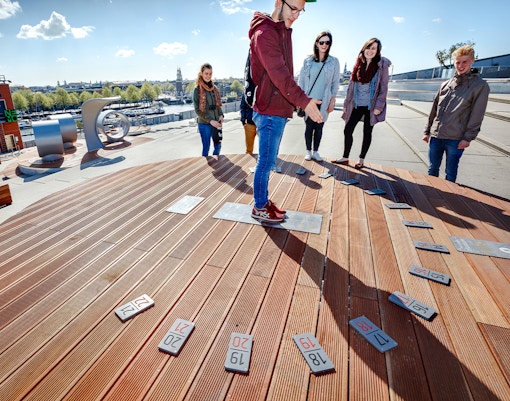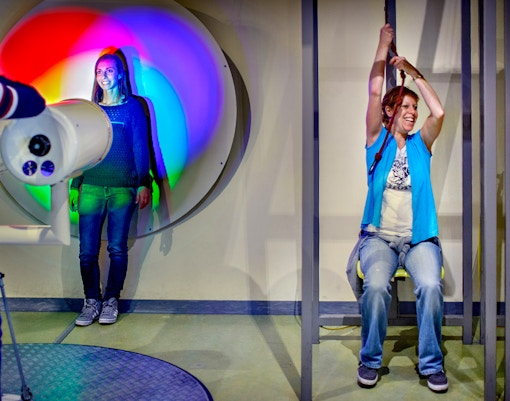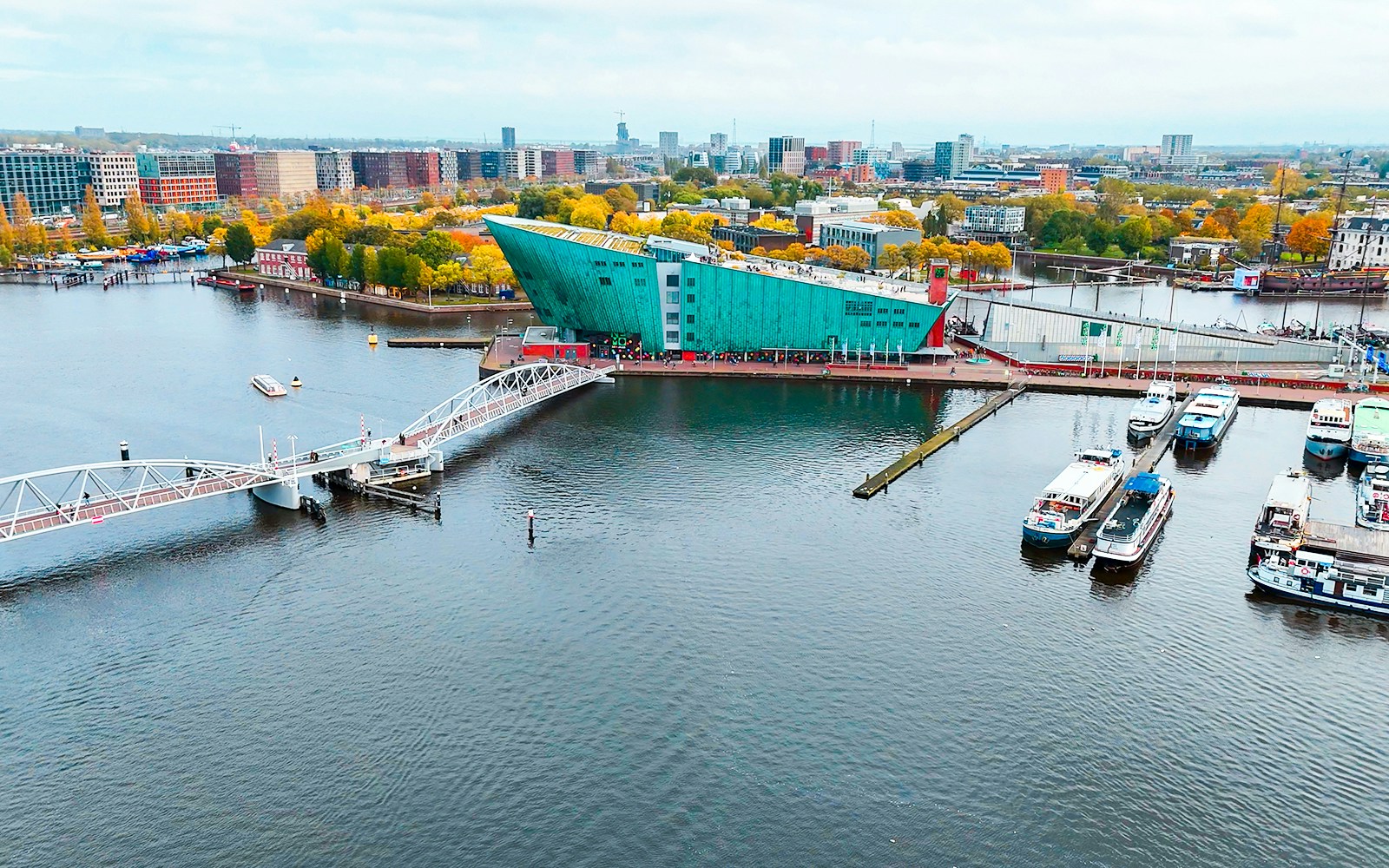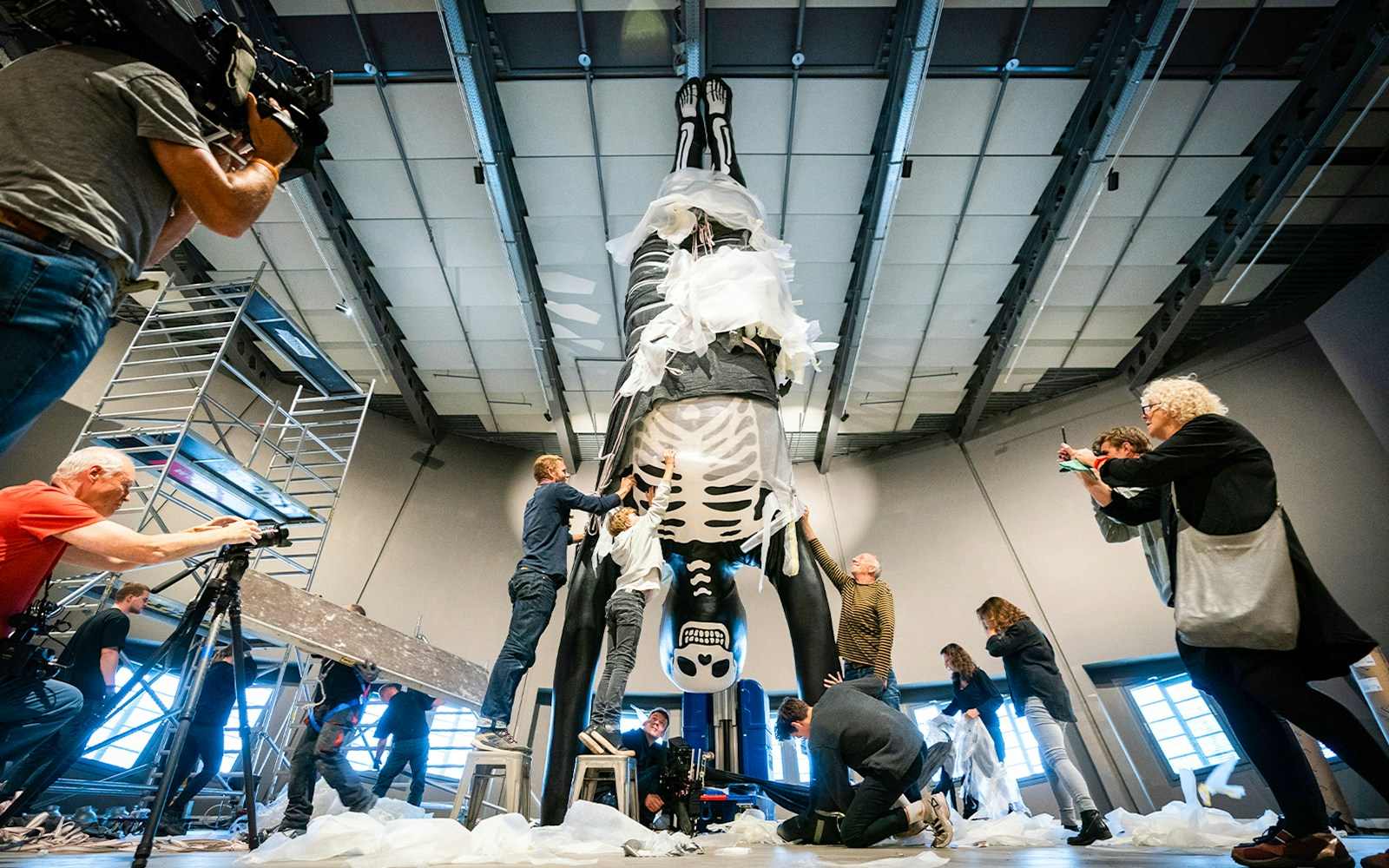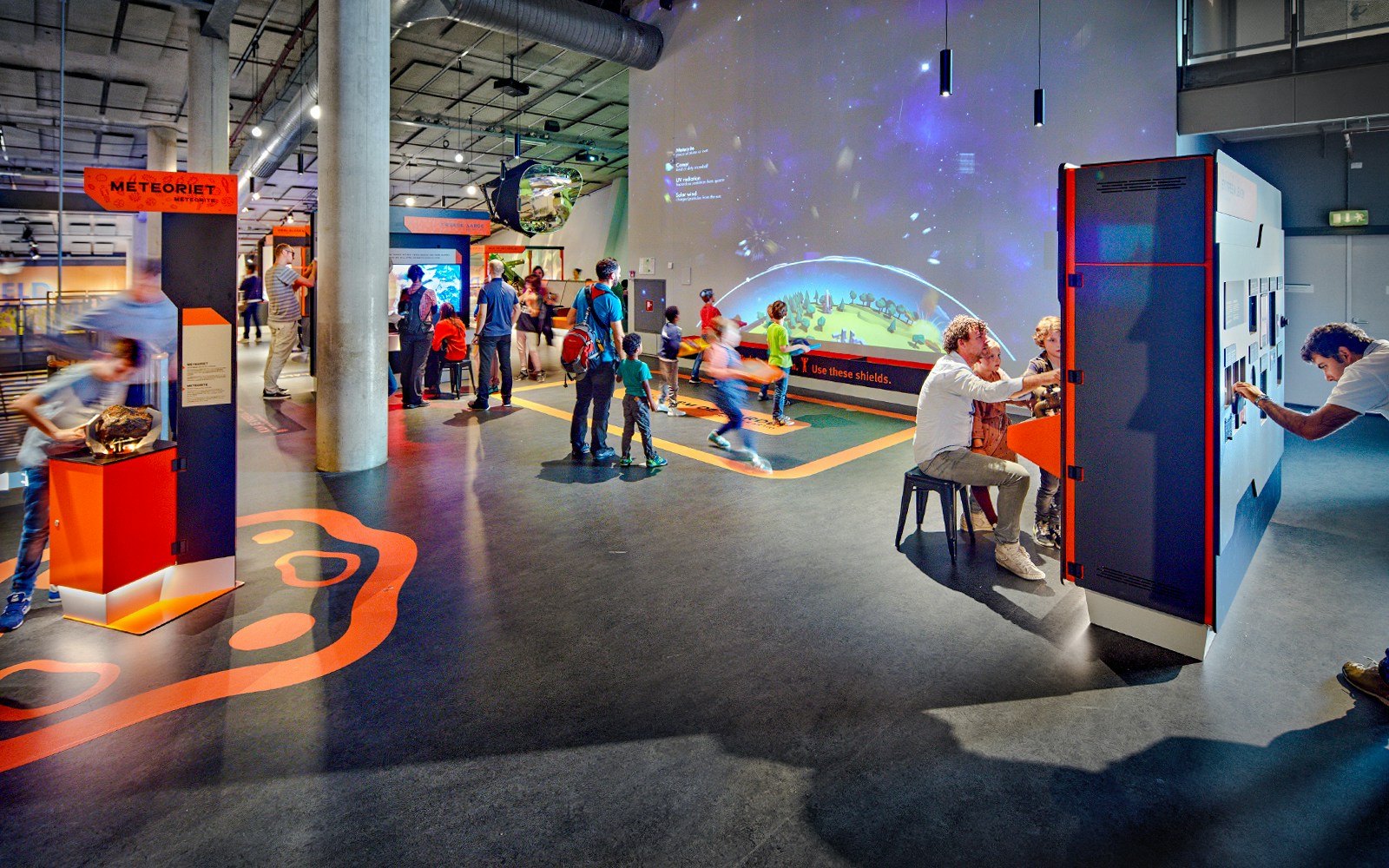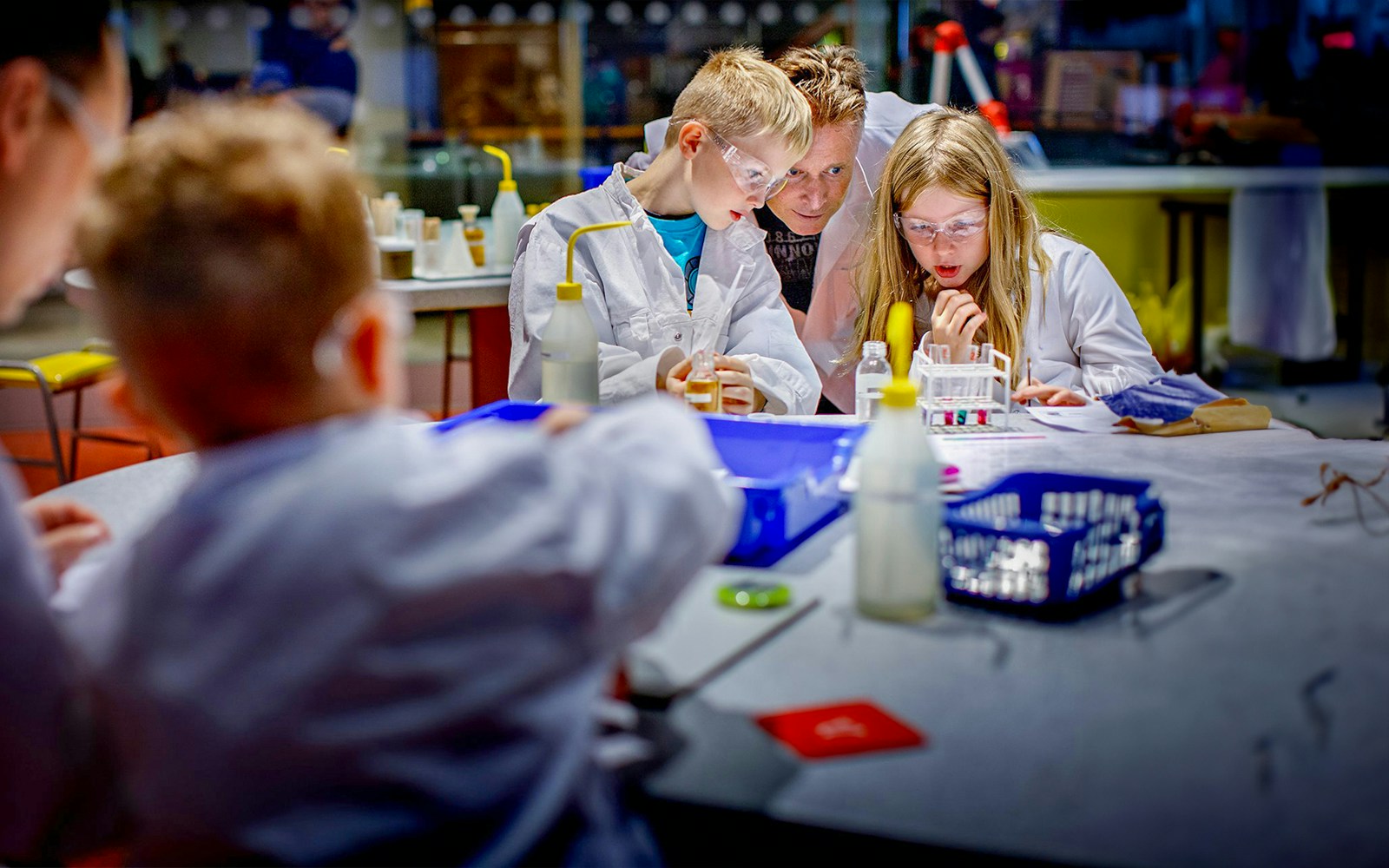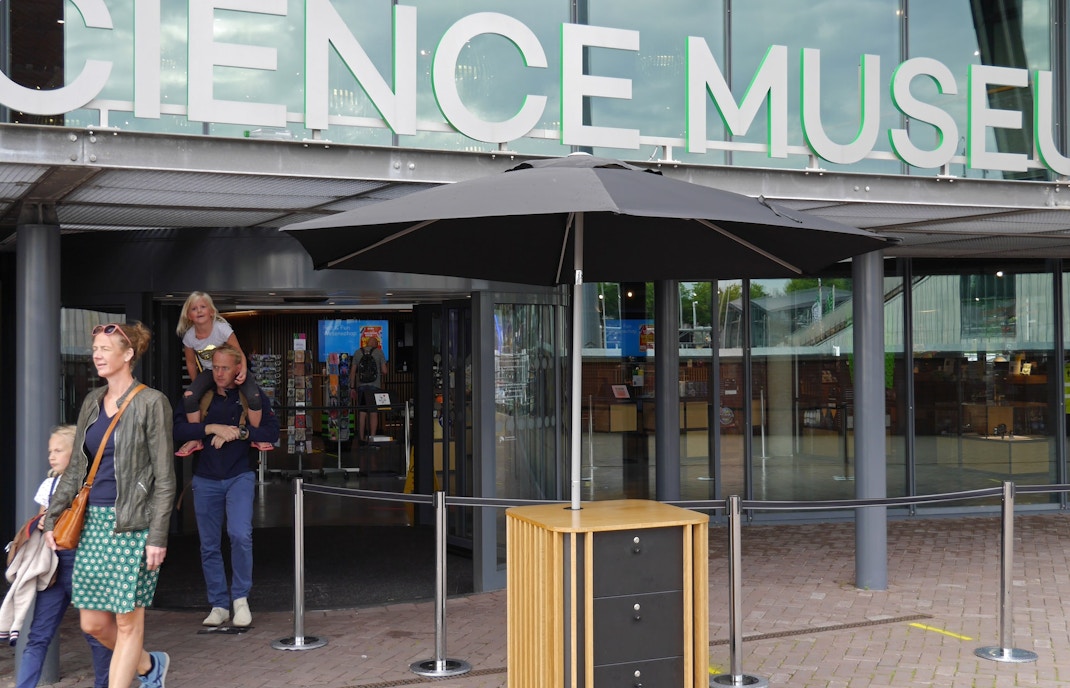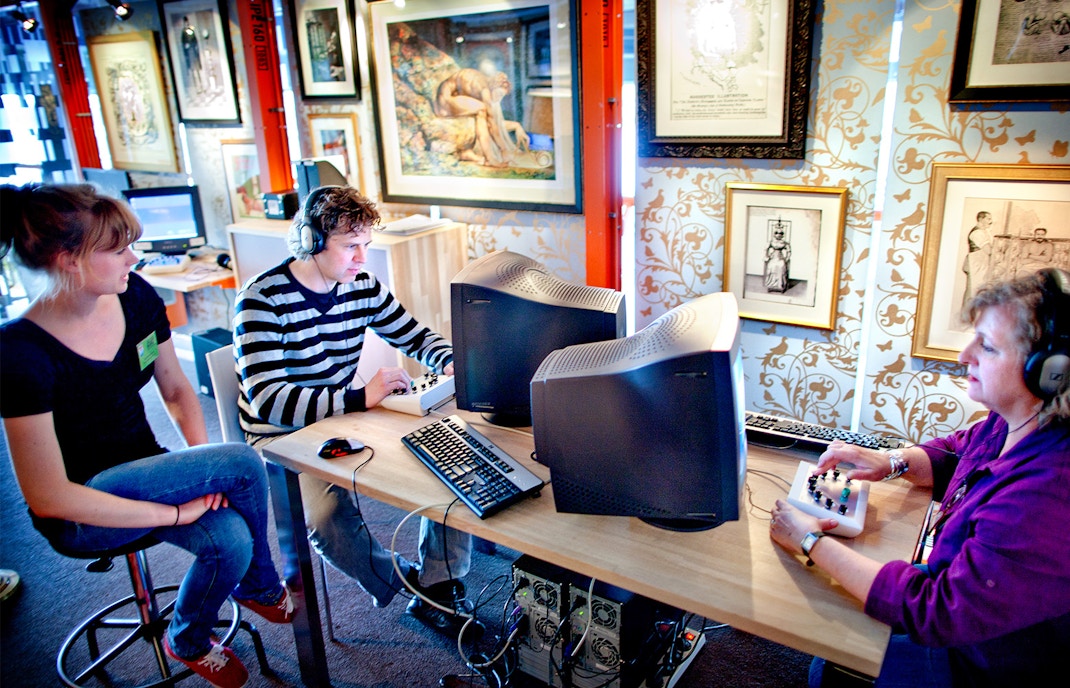- Official name: NEMO Science Museum
- Location: Oosterdok 2, 1011 VX Amsterdam, Netherlands
- Date of opening: The museum was founded in 1923 and moved into its current building in 1997.
- Timings: It is open Tuesday to Sunday from 10am to 5:30pm, usually closed on Mondays except during school holidays.
- Architect: Renzo Piano
- Architectural style: It features a modern, ship-like design clad in pre-oxidized copper.
- Number of visitors per year: 700,000 guests
- Collection size: The museum holds about 20,000 objects, including 17,000 technological heritage artifacts.
Quick facts about the NEMO Science Museum
